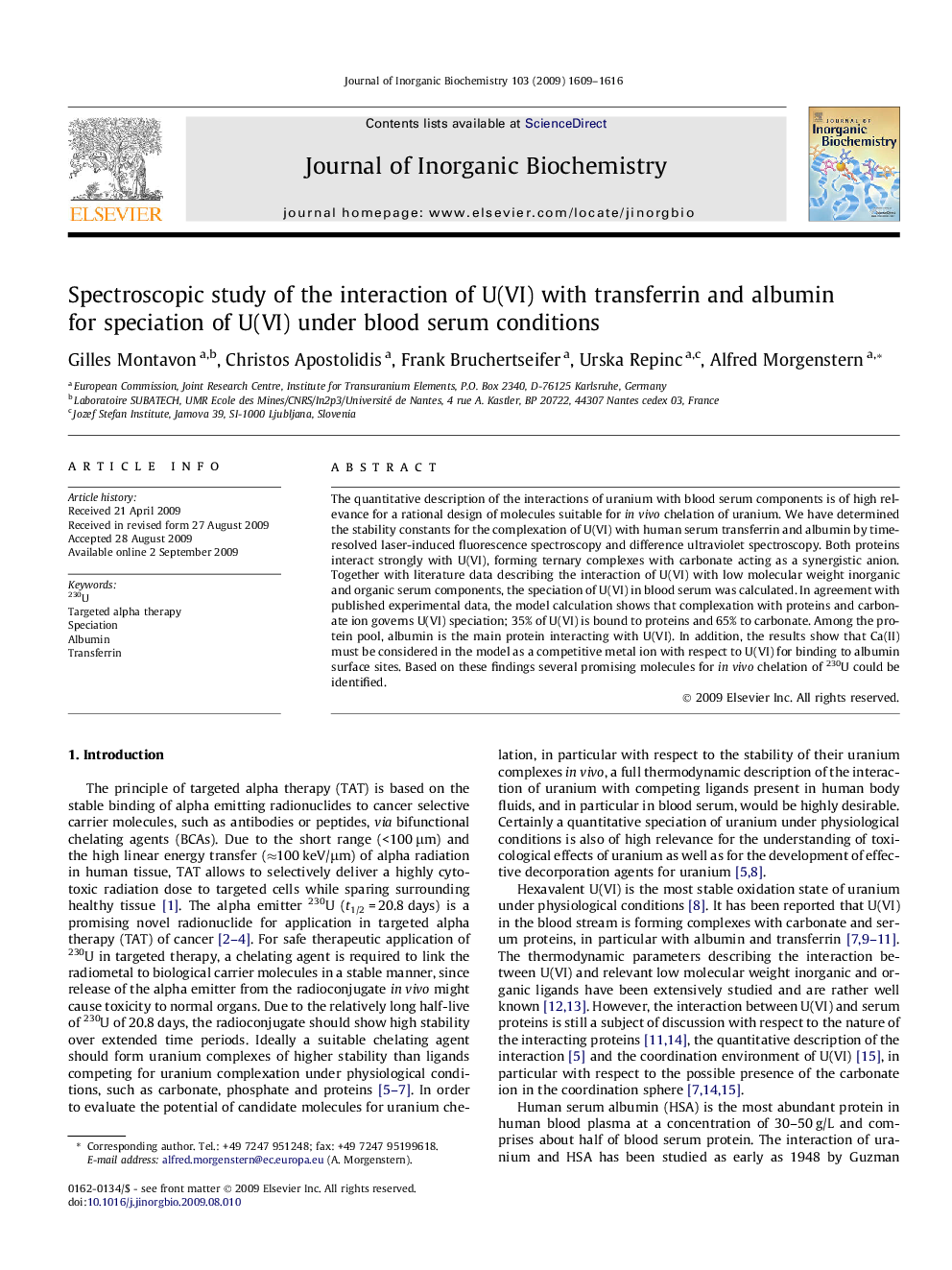| Article ID | Journal | Published Year | Pages | File Type |
|---|---|---|---|---|
| 1316208 | Journal of Inorganic Biochemistry | 2009 | 8 Pages |
The quantitative description of the interactions of uranium with blood serum components is of high relevance for a rational design of molecules suitable for in vivo chelation of uranium. We have determined the stability constants for the complexation of U(VI) with human serum transferrin and albumin by time-resolved laser-induced fluorescence spectroscopy and difference ultraviolet spectroscopy. Both proteins interact strongly with U(VI), forming ternary complexes with carbonate acting as a synergistic anion. Together with literature data describing the interaction of U(VI) with low molecular weight inorganic and organic serum components, the speciation of U(VI) in blood serum was calculated. In agreement with published experimental data, the model calculation shows that complexation with proteins and carbonate ion governs U(VI) speciation; 35% of U(VI) is bound to proteins and 65% to carbonate. Among the protein pool, albumin is the main protein interacting with U(VI). In addition, the results show that Ca(II) must be considered in the model as a competitive metal ion with respect to U(VI) for binding to albumin surface sites. Based on these findings several promising molecules for in vivo chelation of 230U could be identified.
